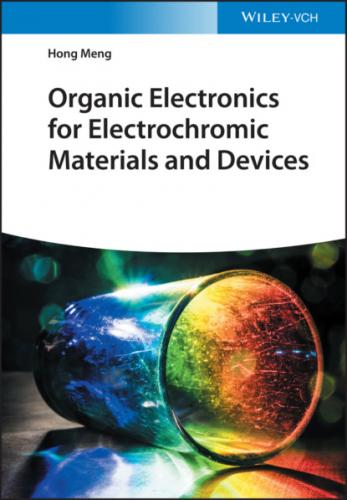16 11 Organic Electroluminochromic Materials 11.1 Introduction 11.2 Conventional Mechanisms of Electroluminochromism 11.3 Electroluminochromic Performance Parameters 11.4 Classical Materials 11.5 Future Perspectives and Conclusion References
17 12 Organic Photoelectrochromic Devices 12.1 Introduction 12.2 Structure Design of PECDs 12.3 Future Perspectives and Conclusion References
18 13 Application of OEC Devices 13.1 Smart Window 13.2 Dimmable Rearview Mirror 13.3 Sensors 13.4 The Application of Electrochromic Device in Display 13.5 Other Applications of OEC References
19 14 Commercialized OEC Materials and Related Analysis of Company Patents 14.1 General Introduction 14.2 Gentex Corporation 14.3 Ricoh Company, Ltd. 14.4 Canon Inc. 14.5 BOE Technology Group Co., Ltd. and OPPO Guangdong Mobile Communications Co., Ltd. 14.6 Other Important Enterprises 14.7 Conclusion References
20 15 Main Challenges for the Commercialization of OEC 15.1 Introduction 15.2 The Long‐Term Stability of OEC Materials 15.3 The Mechanical Stability of OEC Devices (Encapsulation Technology) 15.4 Large‐Area Process Technology: Spray Coating and Roll‐to‐Roll Processes 15.5 Conclusions and Perspective References
21 Index
List of Tables
1 Chapter 2Table 2.1 Polymer hosts generally studied with the examples of gel polymer el...Table 2.2 Examples of self‐healingand cross‐linking polymer electrolyte compl...Table 2.3 Comparison of the Li+ conductivities of some reported solid pol...Table 2.4 Composition and performance of ionic liquid electrolytes.
2 Chapter 4Table 4.1 Recent review and book chapter about viologen‐based EC materials an...Table 4.2 Optical and colorimetric properties of selected viologen radical ca...Table 4.3 Optical and electronic properties of the chalcogen‐bridged viologen...Table 4.4 Representative of composition of ECD.
3 Chapter 5Table 5.1 Most commonly used synthetic procedures for PB thin films.
4 Chapter 6Table 6.1 Electrochromic properties of N‐substituted polypyrrole derivatives.Table 6.2 Electrochromic properties of 3,4‐substituted polypyrrole derivative...
5 Chapter 8Table 8.1 Summary of the electrochromic behavior of the mentioned electropoly...
6 Chapter 9Table 9.1 The apparent ion diffusion coefficients (D app,CV) (cm2/s) of Na+...
List of Illustrations
1 Chapter 1Figure 1.1 Solar irradiance spectrum above atmosphere and at the surface of ...Figure 1.2 The scheme of three types of electrochromic devices.Figure 1.3 The roadmap of EC materials development.Figure 1.4 The spectroelectrochemistry (SEC) of a black‐to‐transmissive EC m...Figure 1.5 (a) The electrochromic contrast of a small molecule EC material....Figure 1.6 The switching time of EC materials. (a) Electrochemical switching...Figure 1.7 The calculation of Q d.Figure 1.8 Different types of CE value of the same EC materials.Figure 1.9 Open‐circuit memory tests of PBOTT‐BTD spray coated on an ITO‐coa...Figure 1.10 Charge density (a) and transmittance (b) variation curves of ECD...Figure 1.11 Recommended testing guidelines for EC windows for exterior archi...
2 Chapter 2Figure 2.1 Main concerns in electrolyte.Figure 2.2 Schematic showing printing of colored‐to‐clear electrochromic pap...Figure 2.3 A fabrication process for lateral paper ECDs showing inkjet‐print...Figure 2.4 Synthetic routes for P[S‐r‐VBMI][PF6].Figure 2.5 Synthetic routes for (PS‐b‐PMMA)18.Figure 2.6 (a) The mechanism of self‐healing process for electrochromic PPFM...
